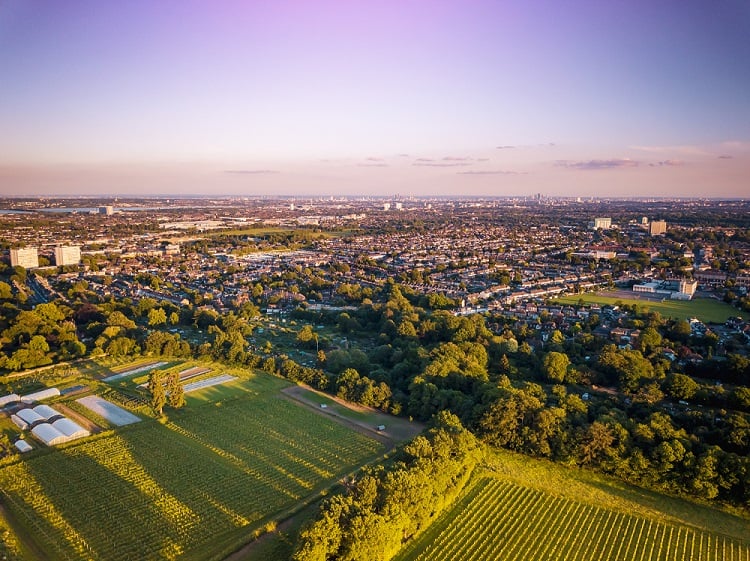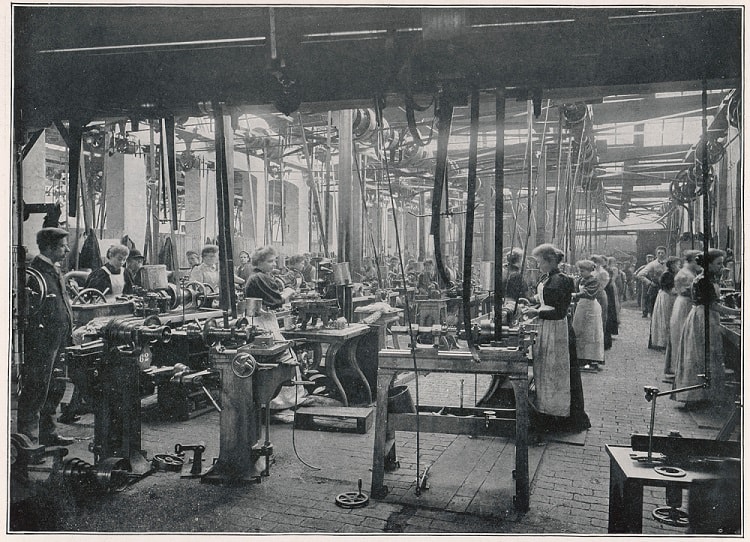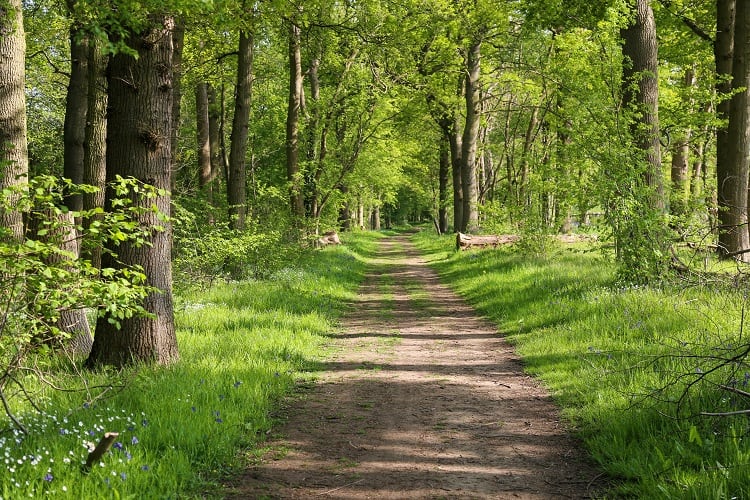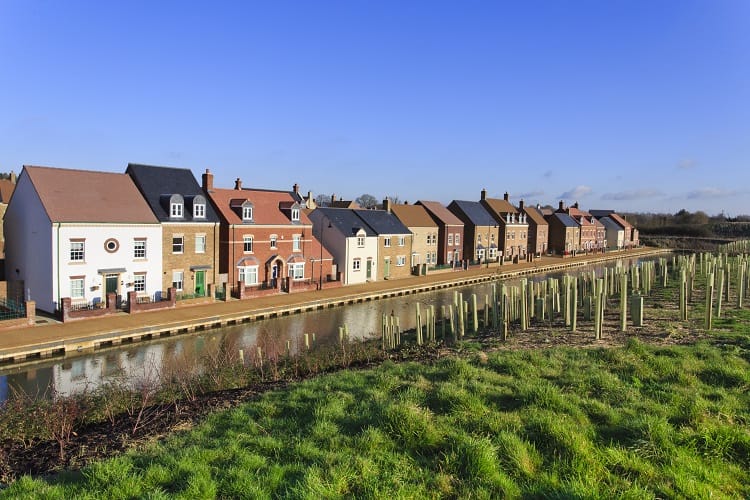
Almost without exception, development on the Green Belt engenders fierce opposition from local communities.
One likely reason for this is that many of us attribute important values of health and wellbeing to Green Belt land. Perhaps, if we’re lucky enough, we live close enough to walk our dog on open countryside. Perhaps its Green Belt status has protected it from being built on despite increasing development pressures.
But are we right to associate health benefits with Green Belt land?
To best understand the relationship between the Green Belt and our health and wellbeing, we need to look again at the original intentions of Green Belt land and how the planning system has changed over time to meet these important needs.
The link between place and health
We left our potted history of the Green Belt last time by looking at the 1955 Circular, where the original purpose as stated by Duncan Sandys MP was:
…for the wellbeing of our people and for the preservation of the countryside, we have a clear duty to do all we can to prevent the further unrestricted sprawl of the great cities
The two principal aims were to preserve the countryside and to enhance wellbeing.
The link between your physical surroundings and your health and wellbeing might seem obvious to us now but it was not always a given. It took over a century before policy makers connected the dots between the poor living conditions of urban factory workers and poor health. But, once the wheels were put in motion, and with the emergence of the 1875 Public Health Act, our cities began to invest in proper sanitation and a certain standard of living (albeit one that we would still consider substandard).
It was worth the fuss, because healthy workers lived longer, worked harder, and made the factory owners more money.

How health took centre stage as a core objective of the planning system
Whatever his motivation, Ebenezer Howard’s big vision, way back in 1898, was for ‘slumless, smokeless cities’, and the Green Belt solution was seen by policy makers as something of a pièce de resistance. It formed an integral part of how we would solve uncontrolled urban expansion and achieve real reform for living conditions and health.
Alongside the original Green Belt vision came the concept of garden cities and new towns. The 1946 New Towns Act set about rethinking the very structure of our urban areas, ridding cities of overcrowded housing estates and offering an idyllic alternative (for those who could afford to). Hopping over the Green Belt boundary, new towns would offer more space and comfortable living, far from the smoke of the big city.

We love this government video from 1948 promoting the Green Belt concept and the benefits to living conditions that New Towns had to offer. Halting the unchecked growth of cities and starting afresh on land outside the Green Belt, and providing ‘plenty of open spaces, parks, playing fields people could enjoy and flower gardens’.
Sounds so simple, doesn’t it?
Where does health fit into the picture now?
Whilst the Green Belt concept was originally intended to improve health, the world has since evolved. The reality is that Green Belt land isn’t always green, and it isn’t always open.
The planning system offers more sophisticated ways to deliver genuinely valuable spaces in a variety of shapes and forms. Green lungs that reach into urban areas and offer recreational opportunities. Localised areas of green space that provide pockets of nature for neighbourhoods. Formal and informal parks, nature reserves, woods. The list goes on.
People often mistake nearby Green Belt land as their local open green space. It’s not the same thing.

What’s more, the mere presence or size of open space isn’t enough to determine its value. There are other questions to consider:
- Is the land open to the public?
- Is it easily accessible and safe?
- Does it meet an identified need in terms of play or sports facilities etc?
- What quality is the land in?
The planning system of today sets a clear distinction between the role of the Green Belt and the role of other sorts of open space. NPPF chapter 8 considers ‘high quality open spaces’ for sport and recreation (paragraph 98) and Local Green Spaces (paragraph 101) which serve the community and are ‘demonstrably special’. And chapter 15 guides on how to plan effectively for valued landscapes such as National Parks and Areas of Outstanding Natural Beauty, many of which contribute hugely to wellbeing.
NPPF chapter 13, on the other hand, focuses specifically on the prevention of urban sprawl and protecting openness. Recreation is a by-product that can be made the most of, where possible, (paragraph 145) but it is not its primary purpose.

Talking crossed purposes
So, while Green Belt plays an important role in preventing urban sprawl, it doesn’t exude superpowers of recreation and wellbeing. In some circumstances, it’s even inaccessible to the public. By contrast, good quality developments on Green Belt land can actually secure health benefits, by opening up previously inaccessible areas and creating valuable recreation spaces.
Yet still, proposals on Green Belt land are hugely unpopular with communities and this attitude can infiltrate into the way that planners (and members) view and make decisions on Green Belt proposals.
What happens when we conflate the two purposes, attributing more responsibility to Green Belt than our planning system actually conveys? Too often, valuable, much needed development is stymied because of Green Belt policy.
Green Belt parcels in sustainable locations that don’t play a critical role in preserving openness should be released. As a sector, we urgently need to reset our understanding about the bigger purpose the designation was intended to serve (ie that of creating better places). To continue down the existing path of refusing quality proposals because they’re on Green Belt land, regardless of what contribution the land makes to openness, is a missed opportunity that will cost us dearly.

Time to reset our understanding
It feels like we’ve lost our way with what our Green Belt policies are meant to achieve. With a housing crisis that shows no signs of retreating, the pressure to build on our Green Belt is increasing. And yet we as a nation still stoically hold fast to inflexible Green Belt policies created nearly 70 years ago rather than use common sense to objectively assess Green Belt proposals for the opportunities they present.
Let’s be clear. We’re not arguing for Green Belt status to be removed. Not all Green Belt land should be built on. Green Belt policy is a valuable tool which focuses the mind of decision makers to direct development towards settlements and achieve sustainable patterns of development.
But where parcels of Green Belt land no longer serve the purpose for which they were allocated, we need local planning authorities to stand firm and support proposals that offer real benefits to local communities. Even in the midst of public opposition.
Quality Green Belt developments that deliver on local objectives for housing and other essential infrastructure would, actually, secure wellbeing. And, conversely, it’s our valuable biodiversity-rich landscapes and constrained land such as flood plains that need protecting from development, over purely protecting openness.
We need to reset our understanding of the Green Belt’s role in achieving great places and delivering the homes the country needs. There will always be a need to balance the potential competing interests of preserving Green Belt and delivering new homes. But right now, it feels like that balance is off.
If you have a Green Belt site that needs a fresh planning strategy, get in touch with us today and let’s see what we can do.